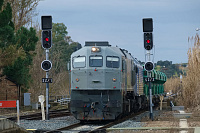This year’s OCP summit was held in person in San Jose California 18-20 October. The Open Compute Project (OCP) was initiated in 2011 with a mission to apply open source and open collaboration to increase the pace of innovation in data centers. The Global summit like data centers themselves are bursting at the seams and so the event was extended to a full 3 days of workshops, presentations and solution demonstrations with hundreds of companies participating.
Calnex was there with our synchronization test solutions. Time and phase synchronization accuracy is an increasingly important topic in data centers. With the virtualisation of applications, better accuracy is required. Also, more and more data center operators are realising the potential efficiency gains that can come from better sync accuracy. It was not surprising therefore, that, while some folks wanted to learn about PTP, most people in the industry are already familiar with it and are in various stages of deploying it in their networks. There will be a lot to hear about this subject at the Sync focused ITSF show in Dusseldorf the week of 7 November.
But what did we think were the really hot topics at the OCP event? Well, the first was, in fact, heat. With the increasing density of the electronics and the growth in processing-intensive applications, liquid cooling is proving to be the necessary solution.

With data centers consuming about 1% of the total world demand for electricity, it is no surprise that energy use and energy efficiency were big topics. The global energy situation brings this into sharp focus, but even before the recent issues, we know that the power demands of a single modern data center can put strains on a local grid. We can see this creating challenges in locating new facilities.
New data centers are being commissioned all the time and given the scale of these facilities and the huge investment made to build them, it is crucial that they be fitted out and commissioned as quickly as possible so as to start generating revenue. We also know that in addition to large data centers, networks require thousands of small data centers located near the network edge to lower the latency and latency variation to the end user. Because of these two dynamics in the industry, modular hardware systems for data centers was the third big topic we followed at the summit.






































































